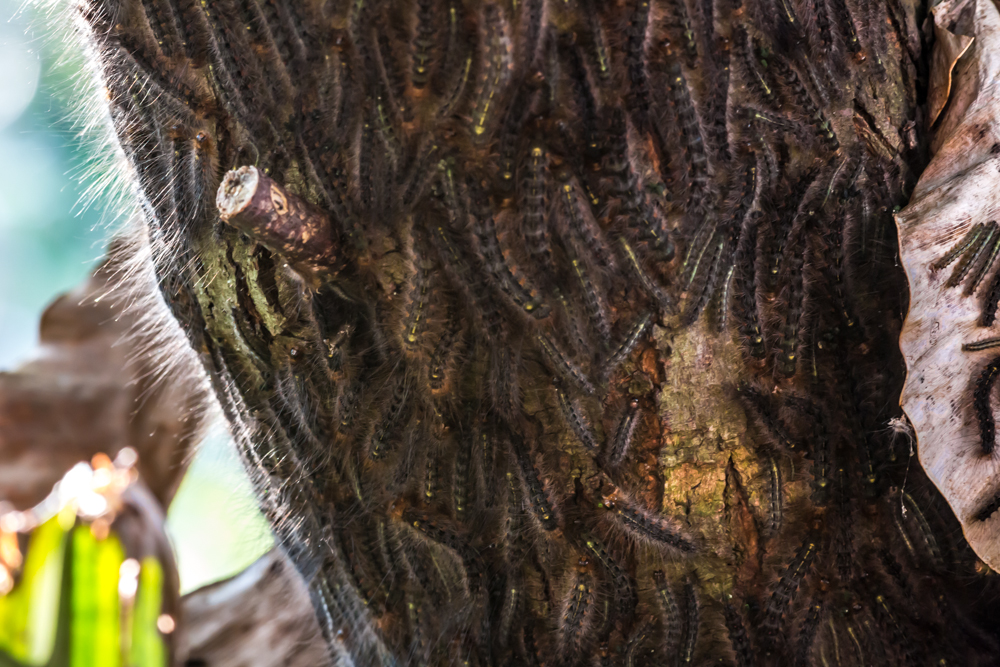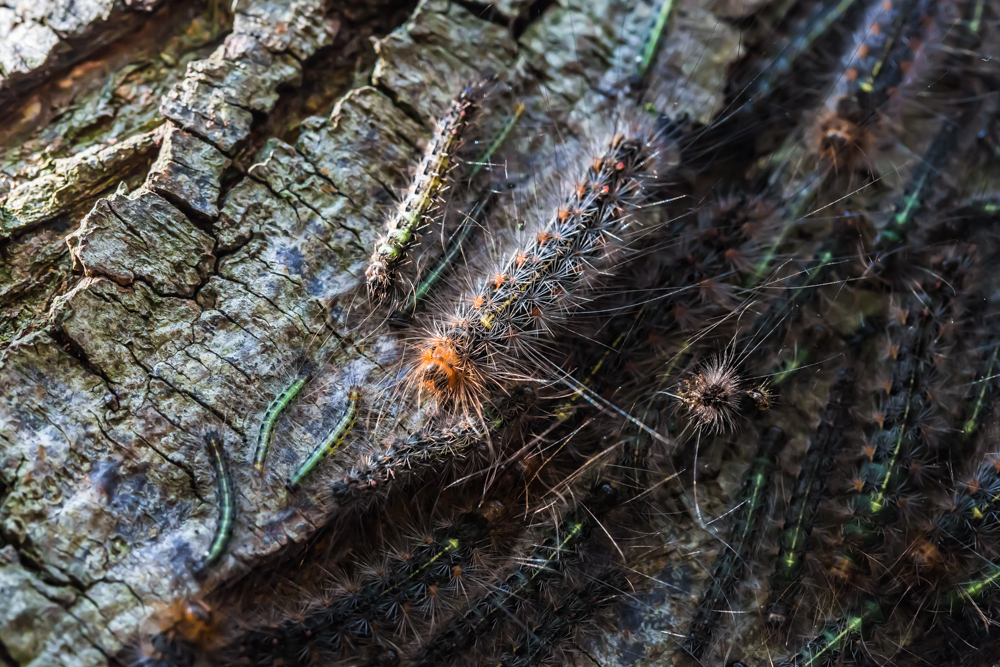 Our urban ecology provides a rich tapestry of interdependencies and sometimes these relationships aren’t immediatly apparent.
Our urban ecology provides a rich tapestry of interdependencies and sometimes these relationships aren’t immediatly apparent.
The tree Melia azedarach (White Cedar, Cape Lilac) is a lovely tree. In Australia, it has the distinction of being one of the few that are deciduous. This is important for our home. It provides very welcome summer shade but lets in light throughout winter. It looks wonderful in flower and growing right next to the house it is visually important.
However, it has a flaw. It is attacked by one caterpillar species Leptocneria reducta. The caterpillar assembles a population often in the hundreds and they eat the leaves of the tree until there are no more.
Counts of moths collected under ultra-violet light from a local study suggest that they have two generations a year. I wouldn’t be surprised if it’s more. Often I find the trunk carpeted by the caterpillars, the ground beneath the tree is full of their droppings. Of course, this raises the question, what do you do?
 There are no real predators. Apparently Tawny Frogmouths (I heard one a couple of nights ago) will eat them. We have watched the caterpillars completely denude our tree. At which point they crawl off in search another. It has to be a Melia azedarach, this caterpillar is a specialist species. When they devour our tree, they crawl into the house, behind curtains, everywhere.
There are no real predators. Apparently Tawny Frogmouths (I heard one a couple of nights ago) will eat them. We have watched the caterpillars completely denude our tree. At which point they crawl off in search another. It has to be a Melia azedarach, this caterpillar is a specialist species. When they devour our tree, they crawl into the house, behind curtains, everywhere.
Our solution is to fight them. Unfortunately, we have had a bottle of pyrethrum spray permanently parked next to the tree. I don’t like spraying, I don’t like pyrethrum and I worry about the food chain and the effect on other species. Our tree has Birds Nest ferns, Elk horns and orchid species growing in and on the tree, lots of habitat. We have lovely skinks and millipedes that also inhabit the tree and there is a chance that they will get sprayed. All in all, it’s a dilemma for us and a minus for a tree which is particularly nice.
However, there is a silver lining. In our urban setting, the birds that reside here are aggressive and dominate, new birds are a rarity. So when something new comes around, it sticks out. Last winter I had noticed a smallish shy bird come in to the garden. It would be gone before I could figure out what it was or what it was doing. After a while, I noticed it would take some food from around the ‘Cedar’ and noticed it was taking caterpillars. I finally managed to get one reasonable photograph of it. It is a Fan-tailed Cuckoo which ‘enjoys hairy-caterpillars in its diet’. Our urban ecology throws up fascinating examples of winners and losers and the caterpillar, a pest species, becomes an important bird attracting species.
So, now that it is late summer, I am going to leave the caterpillars that I photographed yesterday alone. Hopefully they’ll provide an abundance of food for the Fan-tailed Cuckoo and some more opportunities to observe this bird.
There is a great site for information on this and other Australian caterpillars http://lepidoptera.butterflyhouse.com.au/lyma/reducta.html
I am a big fan of Birds in Backyards website http://www.birdsinbackyards.net/species/Cacomantis-flabelliformis
Information about the tree can be found at http://www.anbg.gov.au/gnp/interns-2008/melia-azedarach.html which notes that Melia azedarach can be a weedy species. I would agree! I am constantly pulling young seedlings up.





